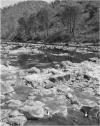Resumo
El artículo analiza una serie de ejemplos de intervención en el patrimonio minero español con la finalidad de conservarestos bienes al mismo tiempo que se produce su explotación cultural y turística. Para comprender cómo ha sidoposible asumir por parte de la sociedad el valor patrimonial de esta herencia industrial, se explica brevemente laevolución del concepto de patrimonio y de paisaje, analizando los cambios producidos en ambos y planteando queel patrimonio minero encuentra su verdadero eje de unión en la nueva idea de paisaje siguiendo la definición quede él se hace en la Convención de Florencia. Esto es debido a las propias características del patrimonio mineroque, por un lado, lo singularizan dentro del patrimonio industrial, pero, por otro, implican que su musealización seproduzca siguiendo modelos y conceptos nuevos. El Parque minero Riotinto –provincia de Huelva, Andalucía– y elParque minero de Almadén –provincia de Ciudad Real, Castilla - La Mancha– son los ejemplos analizados en queel paisaje y su relación con la actividad humana han sido los ejes de su musealización y explotación turística. Mientrastanto, el paisaje minero de Ojos Negros –provincia de Teruel, Aragón– se ha convertido en el escenario parala actividad artística contemporánea, creando una manera diferente de intervenir en este paisaje y promover surecuperación para la sociedad.La revista Apuntes se encuentra registrada bajo la licencia Creative Commons Reconocimiento 4.0 Internacional. Por lo tanto, esta obra se puede reproducir, distribuir y comunicar públicamente en formato digital, siempre que se reconozca el nombre de los autores y a la Pontificia Universidad Javeriana. Se permite citar, adaptar, transformar, autoarchivar, republicar y crear a partir del material, para cualquier finalidad (incluso comercial), siempre que se reconozca adecuadamente la autoría, se proporcione un enlace a la obra original y se indique si se han realizado cambios. La Pontificia Universidad Javeriana no retiene los derechos sobre las obras publicadas y los contenidos son responsabilidad exclusiva de los autores, quienes conservan sus derechos morales, intelectuales, de privacidad y publicidad.
El aval sobre la intervención de la obra (revisión, corrección de estilo, traducción, diagramación) y su posterior divulgación se otorga mediante una licencia de uso y no a través de una cesión de derechos, lo que representa que la revista y la Pontificia Universidad Javeriana se eximen de cualquier responsabilidad que se pueda derivar de una mala práctica ética por parte de los autores. En consecuencia de la protección brindada por la licencia de uso, la revista no se encuentra en la obligación de publicar retractaciones o modificar la información ya publicada, a no ser que la errata surja del proceso de gestión editorial. La publicación de contenidos en esta revista no representa regalías para los contribuyentes.


